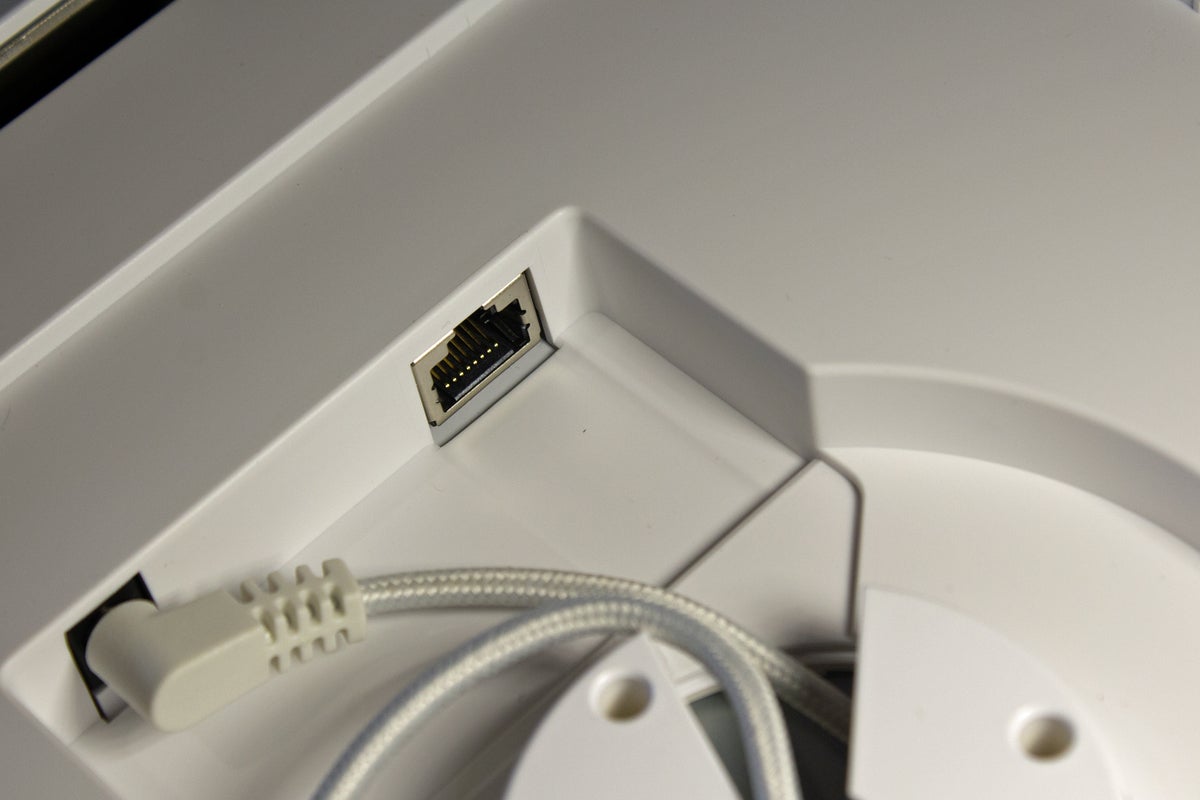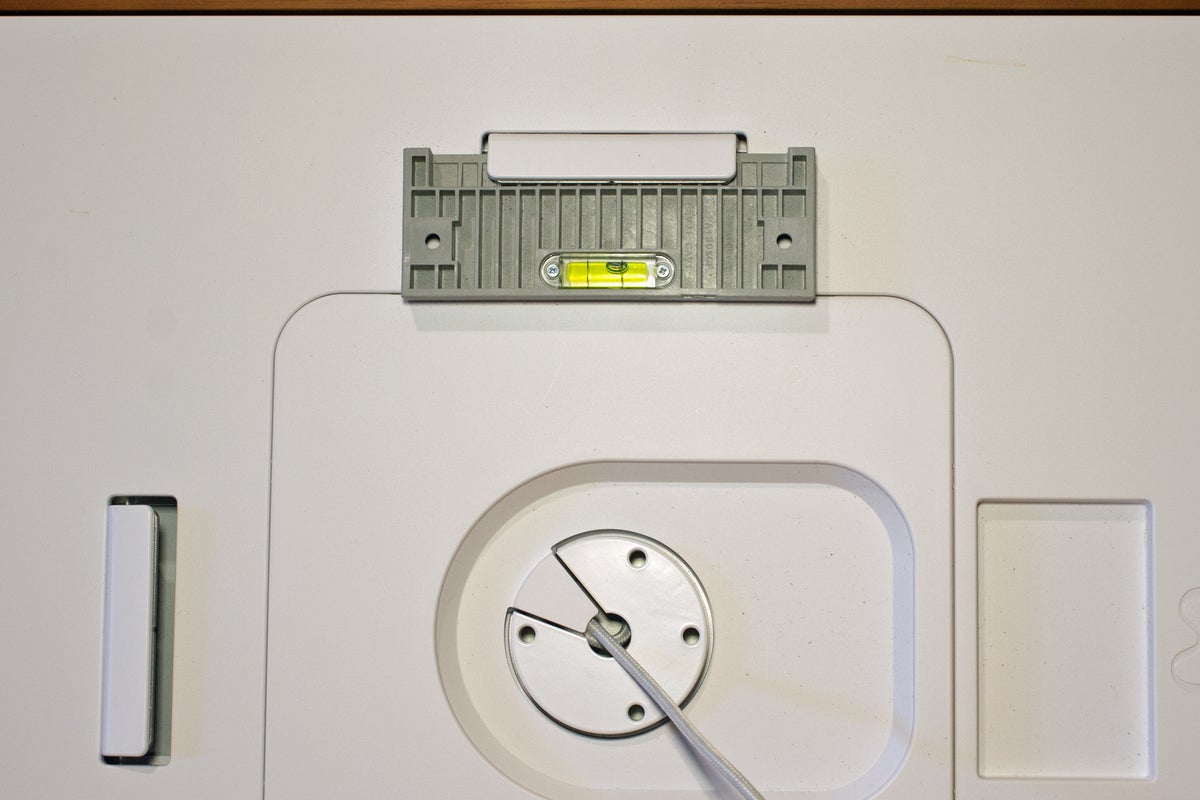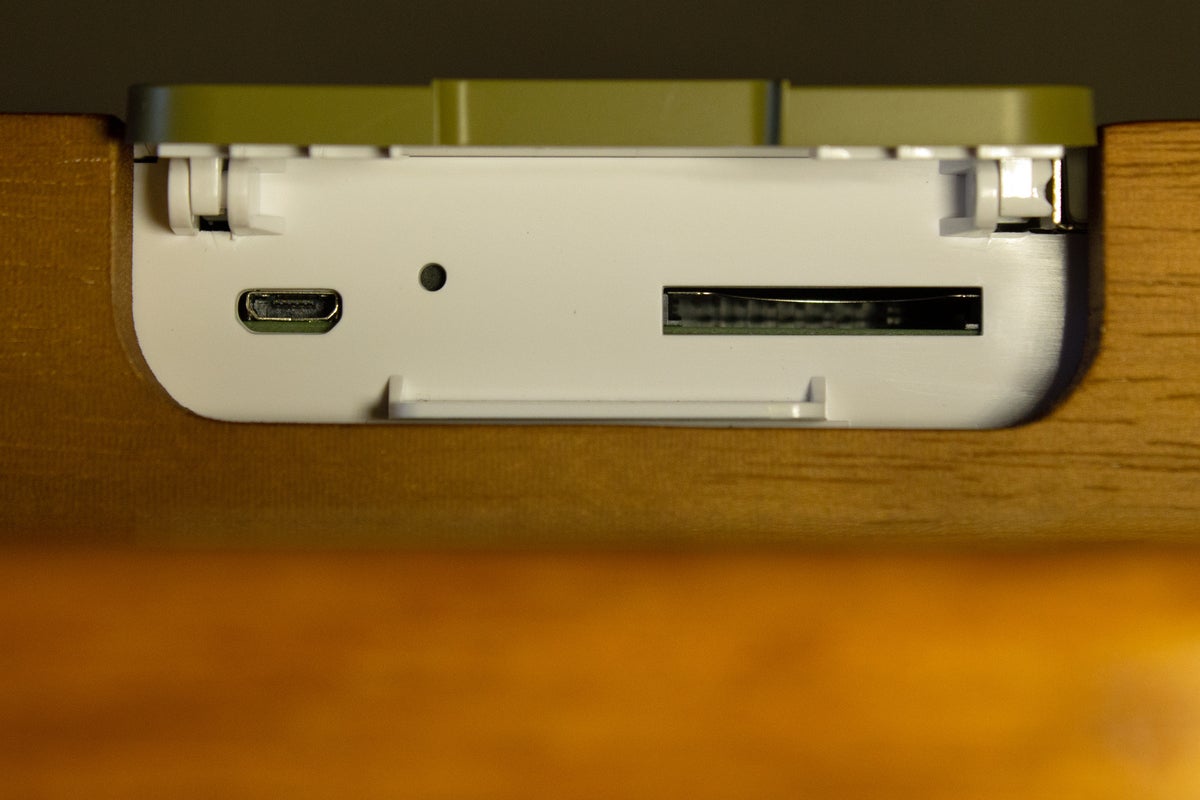[responsivevoice_button rate=”1″ pitch=”1.2″ volume=”0.8″ voice=”US English Female” buttontext=”Story in Audio”]
Meural Canvas II review: If you can’t go to the art museum, bring the art museum to you
Even when travel restrictions are relaxed, and social distancing becomes less critical, many of us will remain reluctant to travel long distances to visit the world’s great art museums. Install the Meural Canvas II in your home, and you can bring many of the world’s great art museums right into your home.
Available in two sizes—16×14 inches ($400 and up, depending on finish and accessories) and 19×29 inches ($600 and up)—the Meural Canvas II (I’ll just refer to it as the Meural from here) is essentially a digital picture frame. But it’s nothing like the cheap tabletop photo frames introduced in the 1990s. The Meural consists of an AHVA (Advanced Hyper-Viewing Angle) LCD display panel capable of displaying 16.7 million colors at a resolution of 1920×1080 pixels. AHVA is great for off-axis viewing, and in that respect it is similar, if not superior, to LG’s IPS and Samsung’s PLS display technologies. In addition to that, the Meural glass is treated with an anti-glare coating that prevents reflections from detracting from the art.
From a pixels-per-inch perspective, 1920×1080 resolution might not seem that impressive, but the paintings, photographs, and animations I displayed on the Meural Canvas II looked fantastic—to the point where I could discern the brushstrokes in some paintings, particularly in the works of the Impressionists. Deep black levels result in excellent contrast between light and dark areas of paintings, photographs, and photos of sculptures. And since you own the display, you can give any image closer inspection than any museum would be comfortable with if you were examining the original. I won’t go so far as to say the experience equals standing in front of the original works, but it is certainly the next best thing.
 Meural/Netgear
Meural/NetgearThe Meural Canvas, a digital smart frame for displaying fine art, is available in two sizes (we reviewed the smaller 16×14-inch model).
More specs and features
Both frames are available in either black or white painted plastic, or dark or light stained wood, with a 1.75-inch plastic matte surrounding the display itself. (This review is based on the 16×24-inch model with a light stained wood finish.) Each one is outfitted with a 1.8GHz quad-core ARM Cortex A17 processors, 2GB of DDR3 memory, and 8GB of onboard storage. Networking heavyweight Netgear acquired Meural the company in 2018, and these products are outfitted with dual-band Wi-Fi 5 (2.4-/5GHz 802.11ac) adapters, plus Bluetooth 4.1 radios for initial setup. There’s also an ethernet port on the back of the panel.
The Meural requires electricity to operate, so the biggest drawback to the frame is its dependence on a chunky (roughly 3×2 inches) wall wart. The eight-foot cord that delivers power to the frame is wrapped in an attractive fabric, but the only way to get around having an ugly string hanging down the wall from your beautiful art is to build a recessed electrical box in the wall behind the frame (the back of the frame isn’t deep enough to hide the adapter should you already have an outlet in the middle of the wall).
That’s something most people would hire an electrician to do, although there is one means of ditching the adapter: The aforementioned ethernet port supports Power over ethernet (PoE). While that low-voltage solution is a relatively easy DIY project (provided you have a switch that supports PoE), you’ll still need to cut a hole in your wall. And once you’ve done that, you’re not going to want to move the frame to any other location.
 Michael Brown / IDG
Michael Brown / IDGThe Meural Canvas II’s ethernet port supports Power over ethernet (PoE), which would eliminate the need for its chunky power adapter (and bringing power to it using that low-voltage tech wouldn’t necessarily require you to hire an electrician).
The frame comes with a mounting cleat with a built-in bubble level, along with two hollow-wall anchors that I’m not entirely sure I’d trust to support its substantial weight (15.49 or 19.74 pounds respectively). If you’d prefer, you can set the Meural on an easel or a tabletop and lean it against the wall (a small non-slip pad is provided for this purpose).
The Meural can be oriented either horizontally (landscape) or vertically (portrait), and you can switch between the two modes either by lifting it off the cleat or picking it up off whatever surface it’s resting on. When you do this, you’ll need to take care that you don’t inadvertently touch the on/off switch that’s on one side of the frame. An optional rotating mount is also available for $50, and I would heartily recommend buying it if you think you’ll change its orientation often—dropping the frame while trying to rehang it on the cleat would be a tragedy. The Meural app can be set so that the frame only displays art that’s in the correct orientation for the frame: Images in portrait mode won’t be shown if the frame is in landscape mode and vice versa. Defeat this setting and you’ll see all the images in a playlist, but some of them might be unpleasantly cropped.
 Michael Brown / IDG
Michael Brown / IDGThe Meural Canvas II can be hung in either portrait or landscape mode when you attach this doodad with the built-in bubble level to the wall. But if you plan to switch between the two orientations, you should spring for the optional $50 rotating mount (not shown here).
What’s included
Netgear provides 100 curated images from the Meural art library, with examples of both classic and modern art, photographs, and even some GIF animations and cinemagraph videos. Some of these are preloaded to the frame’s storage, but you’ll need to download the rest (follow this link to see all the free samples available). Once you’ve created an account on Netgear’s website, you can log in, point, and click to download new images to your frame.
You can also upload your own digital art (e.g., digital photos) to the frame: This is accomplished either by saving your images to an SD card (there’s a full-sized SD card slot on one side of the frame—the bottom when it’s in landscape orientation). Most modern cameras use microSD cards these days, but adapters are cheap. You can buy a SanDisk adapter on Amazon for less than $4. You can also upload images to Netgear’s server and then download them to the frame if you’re not worried about the privacy implications of putting them on a server you don’t control—however temporary that might be.
 Michael Brown / IDG
Michael Brown / IDGA plastic door hides an SD memory card slot and a Micro USB port.
You will want that subscription
But the best Meural experience requires a paid subscription to unlock the breadth and depth of what’s available: More than 30,000 curated works, organized by artist, genre, participating museums, and partnerships (including Marvel and National Geographic). You can also download “playlists,” collections of art from a given artist; from a specific genre, movement, or style; or type (e.g., photographs, mixed media, painting, and even photos of sculptures).
A subscription costs $9 per month or $70 per year, but you can add only one additional frame to a subscription. Buy a third and you’ll need another sub. Buy a fifth and you’ll need another, and so on. Subscriptions also include access to editorial content exploring artists, movements, and other topics in plain language. Some artworks (and art playlists) are also available for purchase, with members entitled to significant discounts. Netgear says 60 percent of what it earns on art goes to artists. Membership also allows you to create playlists consisting of your own images mixed with curated art, and it expands your cloud storage from 4GB to 20GB and entitles you to unlimited 24/7 tech support. You can read more about Meural memberships here.
 Michael Brown / IDG
Michael Brown / IDGWave your hand in front of one of the frame’s sensors and explanatory text discussing the currently displayed image pops up.
Sensors embedded in the matte recognize gestures, so you can swipe up and down to open and close menus and choose menu items, and you can swipe left and right to cycle through the art in your playlist. Swiping up while an image is displayed opens a corner window with brief explanatory text discussing the art (crediting the artist, the date the work was created, and other useful information). I’ve become so accustomed to using gestures to zoom into an image that I tried it with the Meural: No dice. An ambient light sensor automatically adjusts the display’s brightness, and you can program the frame to automatically turn off when the room goes dark.
If you’d prefer more certainty on that score, you can also create schedules when the frame will be on and off, and you can even program dates and times when selected playlists are displayed, the order in which images are shown, and the length of time they’ll be shown (you can also freeze any image for as long as you wish to look at it).
Netgear has developed an Alexa skill (which is still in beta, according to an April 2019 posting on Netgear’s customer support page), but you can’t do very much with voice commands. You can turn the frame off and on, you can page through the images in a playlist, and adjust the brightness on a scale of 0 to 100. But I’d suggest giving your frame a name that’s easy for Alexa to understand: Every time I said “Alexa, [something something] Meural,” Alexa responded with “Sorry, I didn’t find a device named ‘mirror.’” That same post from 2019 says “Google Home and Apple HomeKit users should stay tuned—we’re always looking to expand our smart home integrations.” Clearly, Netgear doesn’t consider smart home integration to be a priority for this product.
Should you buy a Meural Canvas II?
I thoroughly enjoyed my time with the Meural Canvas II, and I learned a lot more about the various artists and artistic movements that I explored. But I’m not a hardcore art aficionado, and I didn’t mount the frame to my wall because I wasn’t prepared to spend $500 plus $70 every year to call it mine. That said, the technology is impressive (apart from the smart home integration, that is) and all the art I displayed on the Meural Canvas II looked stunning. If you have a favorite artist, you might want to make sure his or her works are available in Netgear’s collection. But if you’re the type of person who has a favorite artist, you’ll thoroughly enjoy this device even if they don’t.
There’s not a lot of competition in this space, but I do have the Canvia display in house for an upcoming review, and Lenovo recently announced that it’s taking preorders—and offering substantial discounts—for the Lenovo Smart Frame, but that product won’t ship until August. Stay tuned.



























